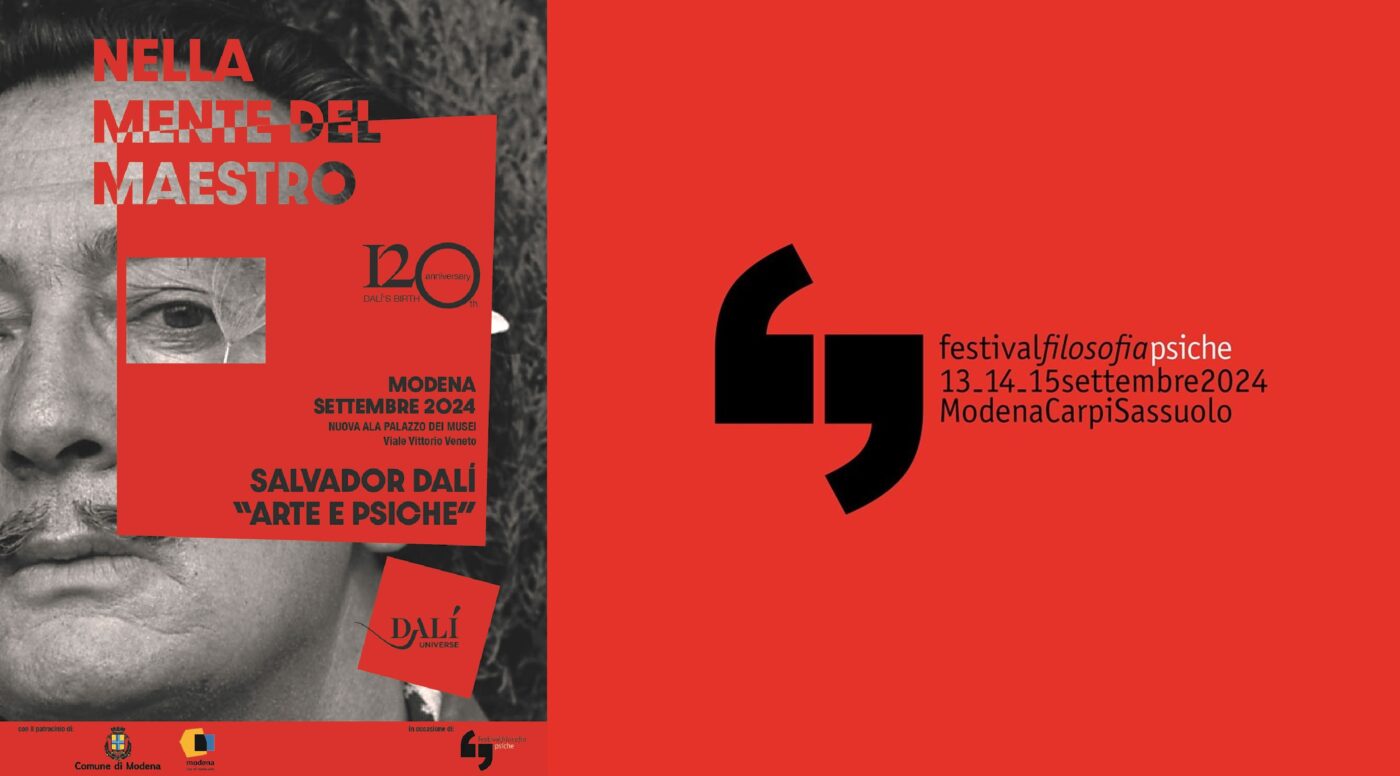From today, September 13, 2024, to January 6, 2025, the city of Modena will host an extraordinary exhibition titled “In the Mind of the Master – Salvador Dalí: ʻArt and Psycheʼ”, dedicated to the enigmatic genius of Surrealism, Salvador Dalí.
Curated by Beniamino Levi, President of Dalí Universe, and sponsored by the Municipality of Modena, the exhibition promises to be an immersive journey into the complex world of one of the most prominent figures of the Surrealist movement.
“In the Mind of the Master – Salvador Dalí: ʻArt and Psycheʼ” will debut during the 2024 edition of Festivalfilosofia, a prominent cultural event that this year will focus on the theme of “Psyche.”
The festival, held in Modena on September 13, 14, and 15, 2024, will coincide with the exhibition’s inauguration on Friday, September 13. The exhibition will remain open to the public until January 6, 2025, showcasing a vast collection of Dalí’s works from the Dalí Universe Collection, exploring the intricate connections between art and the subconscious mind.
“In the Mind of the Master – Salvador Dalí: ʻArt and Psycheʼ” exhibition will feature a carefully curated selection of sculptures, lithographs, etchings, and photographs, highlighting Dalí’s deep engagement with psychoanalysis, particularly focusing on Sigmund Freud’s theories.
For Dalí, reading Freud’s “The Interpretation of Dreams” became one of the most significant discoveries of his life. In Freud’s writings, Dalí found the key to unlocking his hidden fears, desires, and obsessions. Freud’s influence allowed Dalí to develop a unique artistic and visual language, one that continues to distinguish his work to this day.
Among the masterpieces on display, visitors will encounter iconic sculptures such as “The Snail and the Angel” “Woman Aflame,” and “Space Venus,” each shedding light on the complexity of Dalí’s psyche. These works vividly illustrate Dalí’s interpretation of Freudian theories, his inner obsessions, and his memories of the intrauterine universe, as well as his concept of time in the dream state.
The snail holds a special place in Dalí’s surrealist universe and is intimately connected to Sigmund Freud, whom Dalí considered his spiritual father.
Dalí had a deep desire to meet Freud, and during their encounter, he sketched a portrait of Freud’s head, giving it a spiral shape akin to a snail shell, symbolizing what Dalí called “a morphological secret.”
Snails became one of Dalí’s obsessions, serving as both a personal fetish and a source of artistic inspiration. In addition to being one of his favorite foods, he was captivated by the natural geometry of their shells and their duality: a hard exterior and soft interior, much like the egg and lobster, two other recurring motifs in his art.
One of Dalí’s most famous quotes, “The human body is full of secret drawers that only psychoanalysis can open,” emphasizes the tight bond between his psyche and Freud’s theories.
In Dalí’s sculpture “Woman Aflame,” the woman’s form is compartmentalized with drawers, supported by crutches. Following Freud’s influence, Dalí used the drawers to symbolize the unconscious mind, serving as gateways to the woman’s inner world and representing her deepest and most mysterious desires.
The Dalí Universe collection of Illustrated Books, also featured in the exhibition, plays a key role in narrating the connections between the artist’s psychic life and his art. These elements are deeply interwoven, as Dalí’s art can be seen as a symbolic manifestation of the psyche and the mind of the Master.
Another remarkable feature of the exhibition is the collection of Dalí’s Universal Tarot, original artworks from the Dalí Universe Collection.
Created in 1970, using mixed media techniques of watercolor and tempera, this Universal Tarot deck, showcases famous characters from the Tarot, representing past, present, and future.
Salvador Dalí’s Tarot Cards are the first reinterpretation of Tarot figures since 1910. Faithful to the traditional symbolism of the Major and Minor Arcana, they represent the only Tarot series created by the surrealist master. Dalí infused his personal, surreal imagination into these cards while preserving their traditional symbolism. For Dalí, the Tarot Cards served as a tool to liberate the unconscious from the constraints of daily reality.
According to Freud, certain obsessions that individuals develop in childhood gradually lose their symbolic charge in adulthood. However, for Dalí, who frequently professed his love for superstition and magic, Tarot cards held a psychological function, helping him manage his anxieties and fears. These cards contributed to shaping the artist’s identity in relation to the outside world.
The exhibition “In the Mind of the Master – Salvador Dalí: ʻArt and Psycheʼ” offers a unique opportunity to delve into the depths of Dalí’s mind and his relentless exploration of the human psyche. It promises to be a must-see event for art lovers and anyone fascinated by the intersections of art, psychology, and philosophy.

